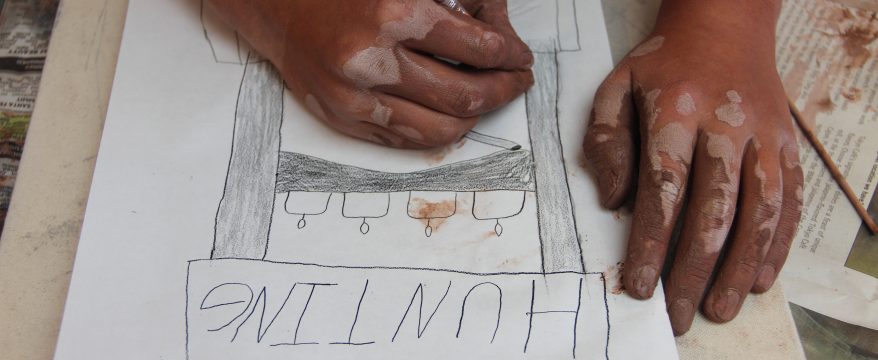Activating Your Story
This is the third introductory blog post to The Power in Story, our upcoming three-part series exploring learning and transformation through story. Designed and facilitated by Chrissie Orr, co-founder of El Otro Lado and the Institute for Living Story, and Aaron Stern, Academy Founder and President, the series is for people working with story across disciplines and applications and recognize the capacity of story to enliven and heal.
In this interview, Chrissie shares what workshop participants can expect to experience as they activate their individual, collective, and community stories. An AUDIO RECORDING of the interview is also available.
Stay tuned for weekly blog posts with insights into The Power in Story series. Learn more by visiting the series listing or contacting co-facilitator Chrissie Orr.
So, in this Power and Story Series: Intensive 1, 2 and 3, we will be exploring various different experiences, and we will be taking people through what here at the Academy we call The I, The We and The It. In the beginning, we will be starting with the individual story. Second intensive will be more about the group, the We, so how do our individual stories layer with other people’s stories, and maybe stories that are not even human stories, the non-human story, the We. The It is what action; what is mine to do. To activators or to animators into our self-discovery, the journey of self-discovery, we will be using a lot of very creative experiences: taking people through very simple writing exercises; experiences; some visualizations; visual collaging; some somatic movement; and partnering, which is an experience or a pedagogy here at the Academy, that we feel actually is very, very important for story work.
Really, participants will come away with a lot of tools in their back pocket that they can then go ahead an utilize in their own way, and adapt for their own communities. I do not want to go into it too much to give away the detail, but that is really… It is very experiential. It is taking participants into their own self-discovery and creating the space, a creative space to enable that to emerge. We feel that this idea of story is really an essential practice for many of us working around this idea of transformation, whether we are artists, educators, activists, or therapeutic workers.
For instance, one teacher that we have worked with here at the Academy said to me once that by knowing her student’s story more clearly, and that student knowing her story more clearly, she could help him help him to learn in a clearer way. Before she heard that this young man, some of the trauma that was emerging in his life, the place where he lived, his family dynamics; once she knew more about that, she understood more his blocks that were happening in the learning. By him sharing, and the way he started to share his story, was that she opened up about some of the blocks she had in her life, in her situation of how she was as a kid. They came to this understanding together and empathy was created.
I think without knowing we can project on one another about who we are. I can sit across from someone that perhaps is African-American, and perhaps project a story on that person. I do not mean to, but I could maybe do that. But by actually sitting with that person and hearing more of the story, that projection can drop away. Sometimes we find, I think, in diverse situations that perhaps there is more of a commonality around our stories than we maybe realize. I think bringing story into our work can create empathy, it can create a deeper understanding for us, it can bring us together in [trying] times…at the moment we can see in our country here some decisiveness going on, or always has been, and perhaps that can begin a healing process.


